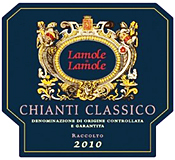What about those reports that “weaker wines are better than stronger ones”?
You’ve probably read about it: According to Fox News, a new study out of Spain has been widely reported to “prove” that “People think weaker wine tastes better.”
But, in fact, the study doesn’t show that at all; and much of the second-hand reporting on the study actually shows how lazy journalists can be.
For example, the Fox account of the study claims that “people think wine with a lower alcohol content tastes [better] because it allows them to focus on the diverse flavor profiles of the beverage.”
That’s a pretty sweeping statement. If you’ve been deep into the alcohol-level tall weeds, as I’ve been, you might think, “Wow, that gives credence to the In Pursuit of Balance argument.” But, in fact, if you read through the entire Fox report, you won’t find a single wine variety mentioned. You will find the implication that wine with 12 percent alcohol “induce[s] a greater…exploration of sensory attributes” than wines in the 14-15 percent range, or higher.
Well, let’s think about that for a minute. Do you really want to drink a 12 percent Zinfandel? A 12 percent Petite Sirah? A 12 percent Merlot, Cabernet Sauvignon, Sauvignon Blanc or Viognier? In fact, let’s be even more generous and raise the alcohol level on those six varieties to 13 percent. What do you think they’d taste like in California?
Not very good. They wouldn’t be ripe—nowhere near ripe. They’d be all sour in acidity, with chlorophyll flavors and tart green fruit. This is why California vintners allow those varieties to get ripe enough to yield wines above 14 percent and usually above 14.5 percent. In the case of Zinfandel and Viognier, sometimes the alcohol level is 15 percent or higher.
When we’re talking about Pinot Noir (and sometimes Chardonnay), the story is, of course, different. California can indeed produce splendid Pinots below 14 percent in a good vintage, as the recent I.P.O.B. tasting showed. But to use the Spanish study to “prove” that consumers don’t like any wine over 14 percent is completely misleading.
Let’s look at the study itself, not just Fox’s reporting. Its key finding—the one seized upon by so much of the media—is, “significantly greater activation [of the brain’s flavor-processing regions] was found for low-alcohol than for high-alcohol content wines…”. It is this assertion that led to such headlines as:
“Does weak wine taste BETTER?” (Daily Mail)
“Wine With Lower Alcohol is More Appealing” (Bustle)
and “Taste Perception Higher With Lower Alcohol Wines” (The Drinks Business)
But, again, the actual study did not identify specific grape varieties that were given to the subjects. (Does anyone really think that a low- alcohol Zinfandel from Amador County or an unripe Viognier from Russian River is “more appealing” than a ripe one?) All the study says is that the wines tasted “were red Spanish [varieties] coming from Rioja, Navarra, and Cataluña),” of unidentified grape varieties (although we can presume they were old varieties like Garnacha, Tempranillo and Monastrell; there may have been some Cabernet and/or Merlot blended into them to make them richer). All of the 26 subject tasters were Spanish. From this, we can infer that the subjects all had palates geared towards Spanish (not California) wines. We also can infer that, in all probability, they are not familiar with our California wines that routinely clock in higher than 14.5 percent alcohol. And so, it seems to me, the study has very little application to an assessment of ripeness and alcohol levels in California wines.
Discover Magazine also reported on the Spanish study and also read into it things that are not supported by the facts. They wrote: “people tend to pay more attention to the flavor when the alcohol content is low.” Well, I would wager that if you give a big, tasty California Zinfandel, Petite Sirah, Cabernet, Viognier, etc. to anyone, even Europeans, they would not and could not indict it for lacking in flavor! Some of them might not care for that particular wine—but they’d pay attention. And that’s what makes the world go ‘round: Different strokes for different folks. That doesn’t bother me at all—but sloppy reporting does. The Spanish study simply doesn’t support the “low alcohol wines are better” headlines.
(c) STEVE HEIMOFF| WINE BLOG – Read entire story here.
